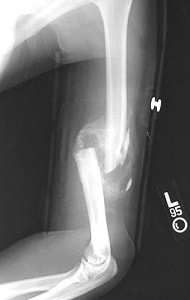I think Vox Day may be on to something about how much of science is just BS. Not saying that all science is BS, but I think a lot of what is taken as ‘scientific truth’ may be false when held to greater scrutiny and or outside of strict, artificial lab conditions.
A google search reveals many stories by scientists about how humans bones are stronger than steel, and or the resiliency of human bones at withstanding punishment:
Link #40: Human Bone Is Five Times Stronger Than Steel!
So, the big question is, how much stronger is human bone than steel? Roughly speaking, human bone is about five times stronger than steel if both of them have the same weight.
Brute Force: Humans Can Sure Take a Punch
Bone is extraordinarily strong — ounce for ounce, bone is stronger than steel, since a bar of steel of comparable size would weigh four or five times as much. A cubic inch of bone can in principle bear a load of 19,000 lbs. (8,626 kg) or more — roughly the weight of five standard pickup trucks — making it about four times as strong as concrete.
Male faces ‘buttressed against punches’ by evolution
CAN THE STRENGTH OF YOUR BONES BE COMPARED TO CONCRETE?
Human bones can resist about 40 times more stress than concrete and can in principle, bare a load of 19,000 lbs. – making it 4 times as strong as concrete per cubic inch.
Hmmm yet “MMA fighter Sage Northcutt, 23, suffered eight fractures and underwent a nine-hour surgery” after losing an MMA match, and this was after being hit in the face just once with a padded glove by his opponent. That kinda shatters that whole bone-are-as-strong-as-steel myth. It doesn’t even have to be MMA, but skateboarding-related fractures, broken arms during arm wrestling, or an an elderly person recovering from a fall in the shower. Does steel break like this from a mere 3-foot fall or from minor torque forces? Obviously not.

Yes, the temporal bone is the hardest bone in the body and most comparable in strength to steel, but it’s also a bone that seldom has forces exerted on it in everyday situations, compared other bones such as in the arms and legs and clavicles, which break much more easily under even small forces.
The reality is, as shown by actual empirical evidence rather than artificial lab conditions, human bones are delicate and break easily and are nowhere near as strong as steel or concrete in any practical sense.